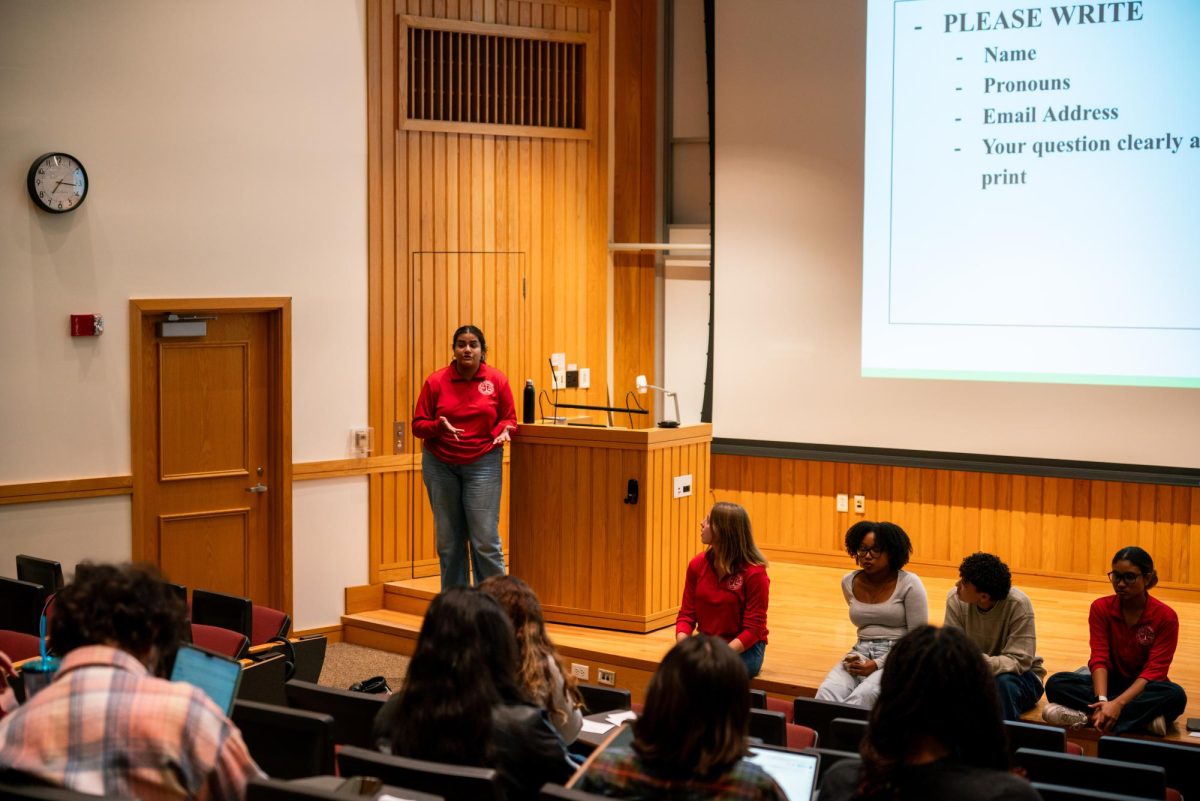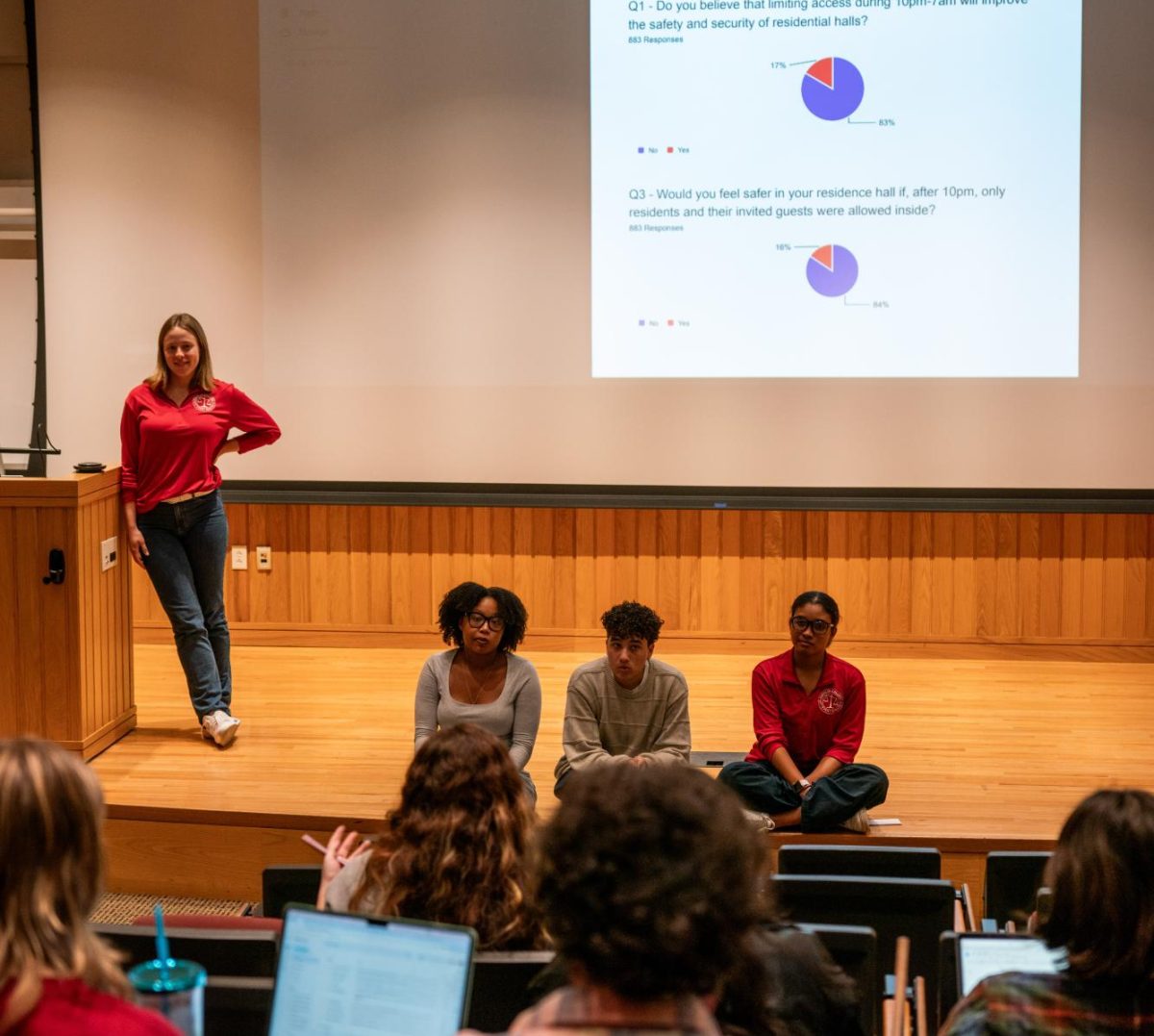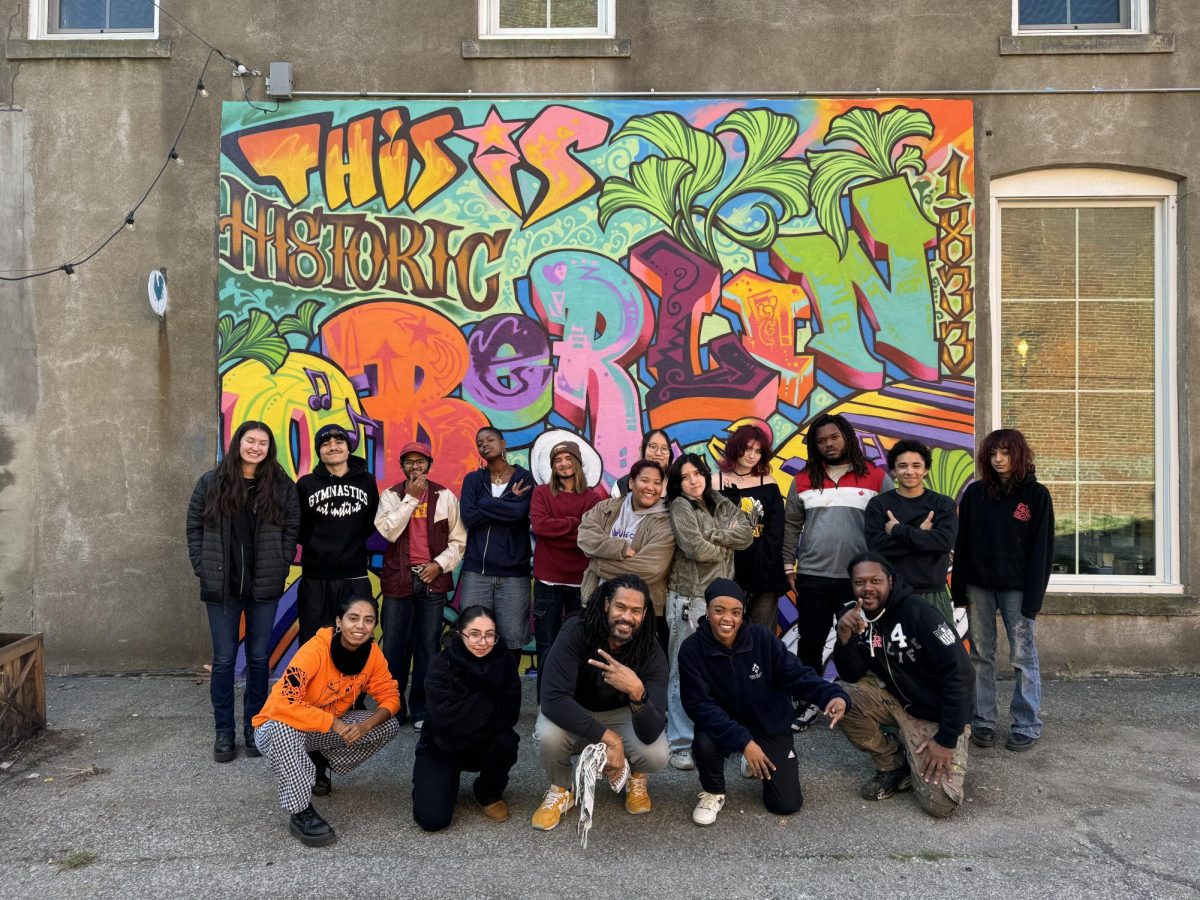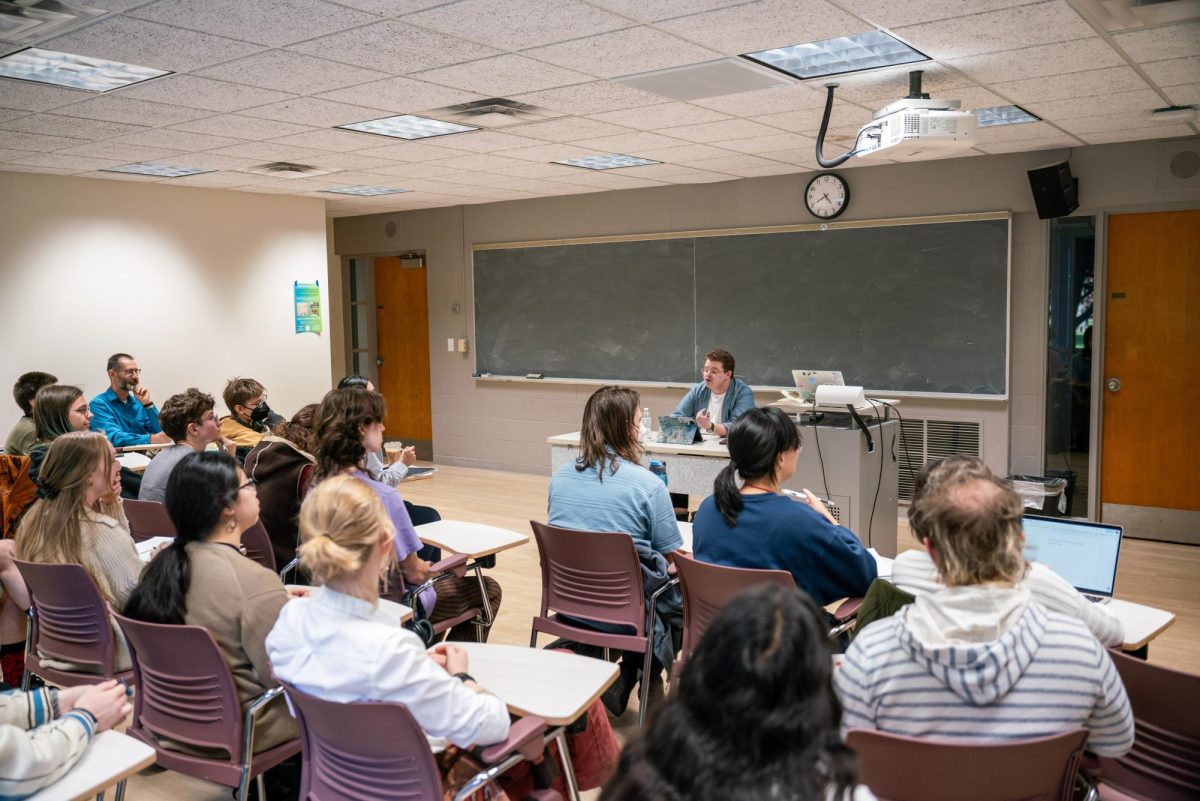Trees Planted in Carbon Offsetting Initiative
November 30, 2012
Some 20 Oberlin students gathered in Tappan Square on Nov. 10 to plant 26 new trees as part of the larger Carbon Offsetting Initiative designed to create ways to offset the College’s carbon output.
Students and administrators had already planted the first tree of the project in Tappan on Sept. 29 prior to the trees planted during Parents Weekend. With the addition of 30 trees planted in collaboration with the Oberlin Rotary Club and the city of Oberlin, the project now totals 57 new trees in the Oberlin area.
College seniors Tani Colbert-Sangree and James Foust and College junior Noel Myers are the driving force behind the project. The impetus came one year ago when Providing Oberlin With Efficiency Responsibly, a nonprofit that works with low-income residents, local households and nonprofit organizations to increase their energy efficiency, was unable to raise enough seed money to promote energy efficiency in the homes that needed it.
POWER is a nonprofit organization started by Oberlin faculty and community members. It estimates that a $20 investment with the organization is the equivalent of pulling one ton of carbon out of the atmosphere.
With the addition of the pledge of Oberlin’s Board of Trustees to be carbon neutral by 2025, it was clear to the Colbert-Sangree, Foust and Myers that the community wanted to reduce its carbon output — a working plan to reduce carbon just needed to be created and implemented.
The goal of the program is to create a local carbon offset market with shares for sale to the College and, later, to alumni, parents and community members. These shares would allow the College to offset some of its carbon through energy efficiency upgrades, tree planting initiatives and carbon sequestering soil practices.
“We are enormously excited for this project,” said Cindy Frantz, associate Professor of Psychology and the president of the board of trustees for POWER. “We will be helping the environment, fighting poverty and boosting the economy, all at the same time. It’s a win, win, win!”
The project has also paired with the Oberlin Project through Kristin Braziunas, OC ’08, its assistant director. Braziunas views the involvement of the Oberlin Project as providing administrative support in addition to project development and implementation.
“The Oberlin Project brings to the table considerable expertise as well as internal and external resources to help envision how the Carbon Offset Project can spiral into a larger project to benefit the city of Oberlin and the larger region,” Braziunas said. “Because Oberlin College is a member of the Clinton Foundation’s Climate Positive Development Program and C40, we will have a national and international audience looking to Oberlin for proof of concept of these types of projects that include not just environmental but also social, economic and educational benefit.”
Braziunas is also working with Colbert-Sangree, Foust and Myers to apply for a grant of $100,000 from the National Fish and Wildlife Foundation and Wells Fargo Bank. The project hopes to be able to fund more pilot programs and bring in consultants to assist in designing, measuring and verifying the projects. The grant also stipulates the creation of a faculty advisory group including Professors Roger Laushman, David Orr, Rumi Shammin and Jordan Suter to identify opportunities to integrate project development into the curriculum.
“It’s a great bridge between the city and the College, one that connects through environmental sustainability and economic growth,” said Myers, referring to the project’s partnership with the Oberlin Project.
Last year, the student body voted in favor of a $10 line item referendum to be added to each student’s term bill. This revenue will go toward purchasing the carbon credits created by the new trees and future sources to offset student transportation to and from Oberlin.
According to the project, three to six tons of carbon per year can be offset by planting an acre of new trees. If all goes according to plan, the project hopes to see a couple hundred new trees planted in the spring, in several places both on and off campus.
Currently, according to the Office of Environmental Sustainability, Oberlin’s carbon footprint is about 40,000 tons of CO2 per year. The goal is to reduce that number to 17,000 tons by 2015 through a series of energy efficiency measures and cleaner energy sources. The long-term goal is for the College to reduce emissions to between 6,000 and 7,000 tons of CO2 per year. Then, the College will use carbon credits and other measures to offset them and become carbon neutral by 2025. “Through the creation of this carbon offsetting program, we are providing a necessary part of the solution,” said Colbert-Sangree.
Foust emphasized Oberlin’s commitment to change in making these goals possible.
“Since Oberlin College’s founding, students here have championed progressive causes and social justice,” said Foust. “With the city’s commitment to carbon positivity by 2050 and the College’s commitment to carbon neutrality by 2025, there is precedent for real progress towards greater environmental justice in our community. Our hope is that the institutionalization of the Carbon Offsetting Initiative will create opportunities for current and future Oberlin students to continue our college’s legacy of progressivism through labor and learning.”


















